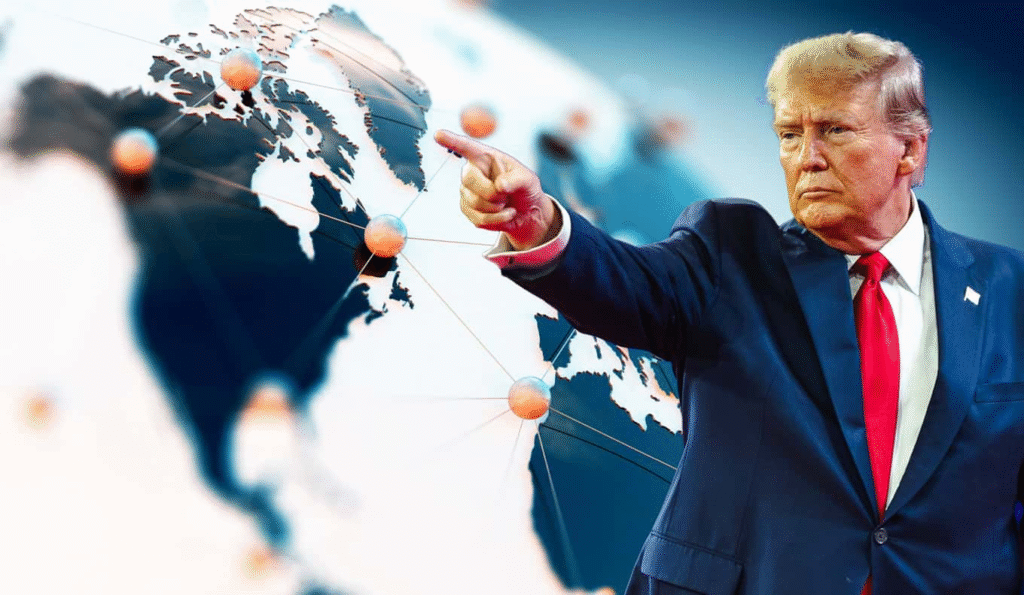1. Why Is U.S. Business Playing a Central Role in Global Policy Today?
- Business is now interwoven with diplomacy, economics, and trade.
- U.S. firms generate nearly 75% of national R&D—$591 billion in 2021, versus $147.5 billion government share
- In April 2025, a major shift in “industrial policy” aligned business interests with national security under the CHIPS and Science Act—a $280 b push to reclaim leadership in semiconductors and AI
2. What Economic Tools Are Business‑Oriented U.S. Policy Levers in the Global Arena?
2.1 How are tariffs and trade measures reshaping global commerce?
- Trump‑era tariffs were expanded by Biden, maintaining high duties especially on Chinese imports. In April 2025 new reciprocal tariffs impacted about 45% of imports, raising concerns about trade disruption
- Tariffs now average over 17.3%, highest since 1935
- Critics like the IMF warn tariffs inflate prices, depress demand, and fail to fix imbalances—U.S. current account deficit hit $1.13 trillion in 2024.
2.2 Why is friend‑shoring a Business strategy in crisis?
- Friendshoring, or shifting supply chains to allied countries, is now an explicit Business‑driven geopolitical tactic. Secretary Yellen promoted this in 2022.
- This strategy helps reduce disruption risks and aligns business alliances with U.S. diplomatic priorities.
2.3 What about export controls and investment screening?
- Export restrictions targeting China’s AI and semiconductor sectors reflect Business concerns over tech leakage. The “small yard, high fence” approach slows China’s access to key technologies
- Enhanced outbound investment screening and digital privacy mandates seek to control corporate links with geopolitical rivals
3. Which Famous Figures and Quotes Highlight Business Influence in Policy?
- Senator Chuck Schumer: described the industrial policy bill as essential to stop authoritarian regimes from overtaking U.S. tech leadership
- FTC Chair Lina Khan warned against tech monopolies harming innovation and national security, citing Boeing’s decline as a cautionary example
- HSBC Chair Sir Mark Tucker stated “globalisation in its current form may have run its course,” highlighting U.S. practices in shifting trade order
4. What Statistics Show Business Risk Awareness in a Geopolitical Era?
- References to geopolitical risk in Fortune 250 filings more than doubled since 2019—and quadrupled since 2009
- In July 2025, U.S. business activity rose with service PMI at 55.2, composite PMI 54.6, but manufacturing PMI dropped to 49.5, partly due to rising tariffs
- U.S. defense spending accounts for 39% of global military budget—$837 billion in 2022, and over $886 b in the 2023 defense bill signed into law by President Biden

5. What Are Frequent Questions (FAQs) on Business‑Led U.S. Global Policy?
Q1: How do tariffs affect U.S. companies and global partners?
A: Tariffs raise input costs for nearly two‑thirds of U.S. manufacturers and 40% of service providers, driving inflation and undermining global trade confidence Reuters.
Q2: Can industrial policy boost business innovation without inviting retaliation?
A: Yes—if calibrated carefully. U.S. industrial initiatives like CHIPS aim to support innovation, but risk heightening global mercantilism and friction with allies
Q3: Will friend‑shoring increase costs for American Business?
A: Possibly. It trades off lower cost for supply‑chain security—a concern for businesses balancing geopolitics and profit.
Q4: Do sanctions and export controls hurt U.S. firms?
A: Some consequences are lost revenue and reduced global market access. Yet business and national security interests often justify the trade‑offs.
6. What Key Themes Are Emerging in Business‑Driven U.S. Geopolitical Policy?
6.1 Business and Business‑friendly policy are merging with national security.
- Today’s economic statecraft merges business strategy with diplomacy. As a CSIS paper notes, decisions on antitrust, trade, and R&D now consider security alongside markets
6.2 Multilateral vs unilateral action: what seems more sustainable?
- Experts suggest multilateral frameworks are more effective than unilateral tariffs. Economic fragmentation can undermine technology sharing and collective goals
6.3 Supply‑chain resilience is a business imperative.
- Companies now prioritize friend‑shoring and diversified sourcing to mitigate geopolitical disruption, shifting from “just‑in‑time” to “just‑in‑case” inventory strategies
7. How Is the U.S. Actually Shaping Global Policy Through Business?
- Major policy tools—tariffs, export controls, industrial subsidies, investment screening, and digital regulations—are fundamentally informed by business and tech sector needs.
- This alignment enables U.S. leverage in AUKUS security pacts, friendly tech alliances, and supply‑chain networks tied to corporate ecosystems
- Additionally, dominance of the U.S. dollar gives economic weaponization power; sanctions remain a go‑to strategy against adversaries like Iran, Russia, and China
8. Quotes to Include in Interstitial Pull‑Outs
“CETs are becoming a focus for foreign policy … U.S. tech sector’s ability to innovate … is directly tied to national security.”
“Globalisation in its current form may have run its course” – Sir Mark Tucker.
9. Key Takeaways
- Business‑led policy is central to U.S. global strategy amid geopolitical tensions.
- Tariffs, export controls, and industrial acts are deployed to safeguard national security and domestic industries.
- Firms increasingly adopt friend‑shoring and supply‑chain resilience as geopolitical tools.
- Antitrust and innovation policy are seen through a security lens, not just economic fairness.
- Financial leverage, including dollar dominance and sanctions, remains core to U.S. global influence.




